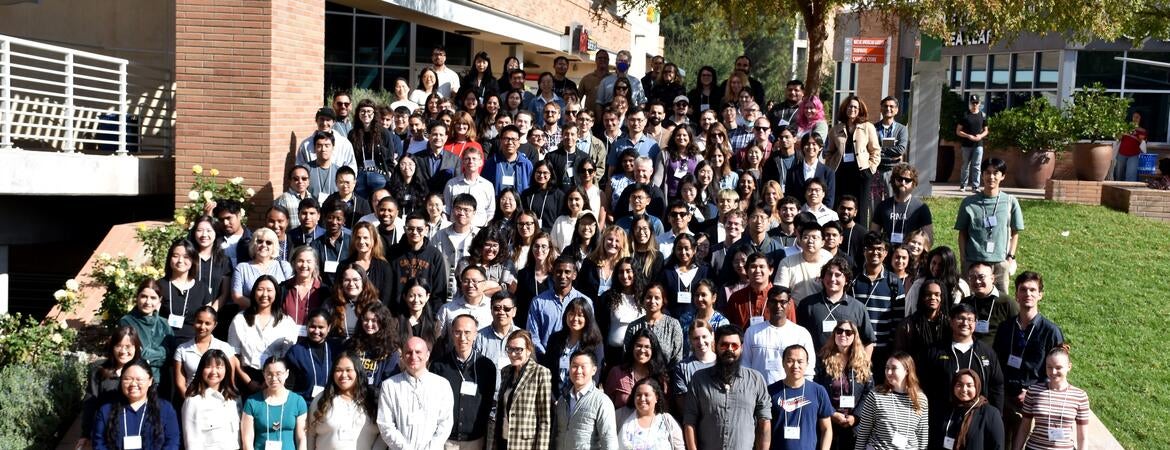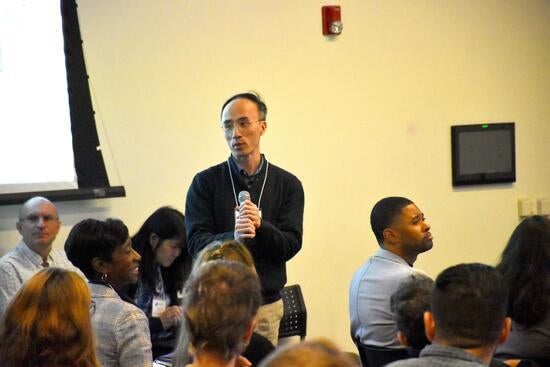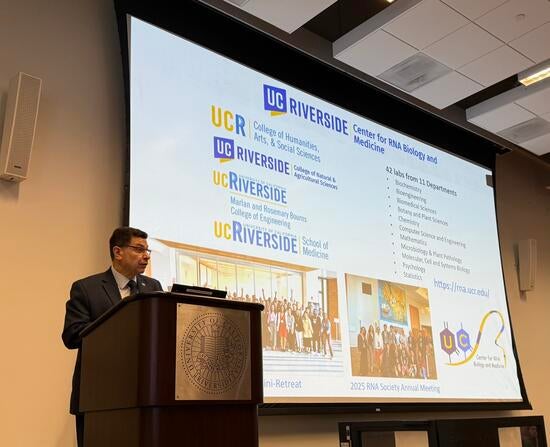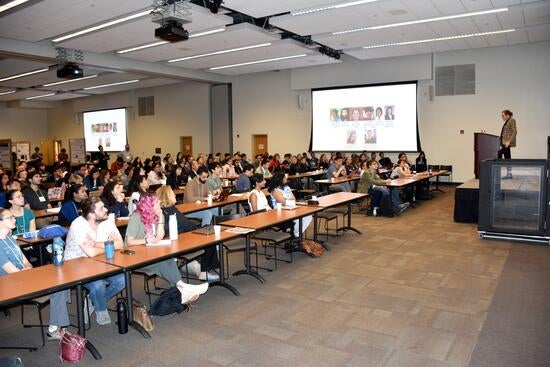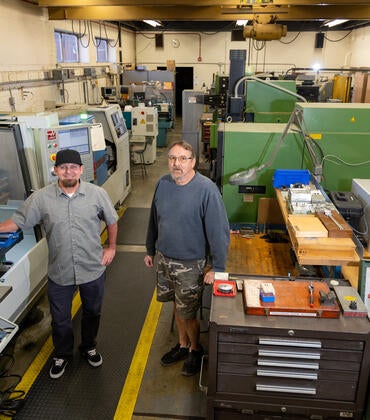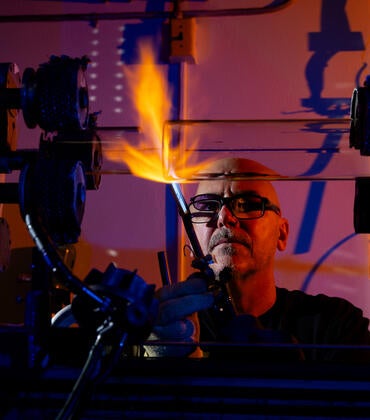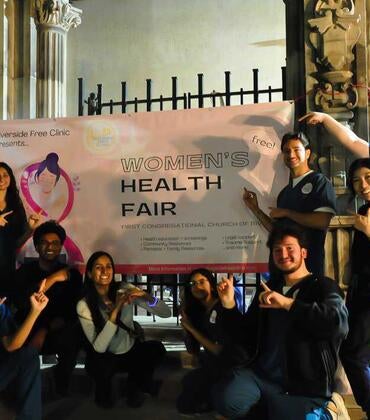The UCR Center for RNA Biology and Medicine, an interdisciplinary research center launched in 2022, combines the expertise of 42 laboratories from 11 departments and four colleges on campus. Earlier this month, the center hosted its third RNA Symposium, which featured a keynote address by Lynne Maquat, a Wolf Prize winner and professor of biochemistry and biophysics at the University of Rochester Medical Center, as well as RNA scientists from UC San Francisco, UC Berkeley, UCLA, UC Irvine, UC San Diego, and UCR.
“The symposium was a resounding success, attracting 236 attendees mostly from Southern California,” said Sika Zheng, a professor of biomedical sciences in the School of Medicine and the director of the UCR Center for RNA Biology and Medicine. “This substantial turnout underscores the growing interest and engagement in RNA research.”
The event’s success was marked by vibrant discussions, presentations, and networking opportunities, making it a standout gathering in the field of RNA biology.
“The symposium significantly enhanced UCR’s scientific visibility, fostered community building, and established our campus as a hub for RNA research,” Zheng said.
Zheng answered questions about this year’s symposium:
Q: What inspired the theme of this year’s RNA symposium, and what key scientific questions did it address?
The theme was inspired by the center’s vision: “The Future with RNA,” emphasizing the importance of basic research fueling RNA’s transformative potential across medicine and technology. The symposium addressed fundamental and applied questions in RNA biology, including RNA decay, RNA splicing, long noncoding RNAs, small RNAs, and RNA therapeutics. This focus reflects the center’s commitment to bridging basic research with real-world applications and fostering interdisciplinary collaboration.
Q: How were the speakers and topics selected?
Speakers were chosen to represent leading research in RNA science. In addition to the keynote speaker, the lineup included experts covering diverse topics from on RNA research as well as its application on neurodevelopmental disorders, cancer, stem cell research, developmental biology, and immunology applications. This selection ensured a balance of cutting-edge science and broad relevance to the RNA community.
Q: How did this year’s symposium differ from previous editions?
The 2025 symposium showcased the RNA Center’s rapid growth since its inception in 2022. Compared to earlier editions, this year it featured:
- Larger attendance and broader institutional representation.
- Enhanced national visibility and recognition of UCR as an RNA research hub.
- Expanded focus on interdisciplinary integration between RNA and other disciplines.
- Celebration of major achievements, including new faculty recruits, faculty tenure, trainee fellowship and academic appointments, and significant research grants secured by the RNA Center investigators.
Q: What kind of collaborations or discussions do you hope the symposium will inspire?
The symposium aimed to catalyze collaborative projects in RNA biology and medicine among RNA Center investigators and external investigators. Attendees expressed interest, leveraging the symposium as a springboard for long-term partnerships across UC campuses and external organizations.
Q: What do you hope participants took away from this year’s event?
- Inspiration from cutting-edge science and diverse perspectives.
- A sense of belonging to a vibrant, collaborative RNA research community.
- Practical insights into emerging technologies and applications.
- Motivation to engage in interdisciplinary collaborations and mentorship opportunities.
